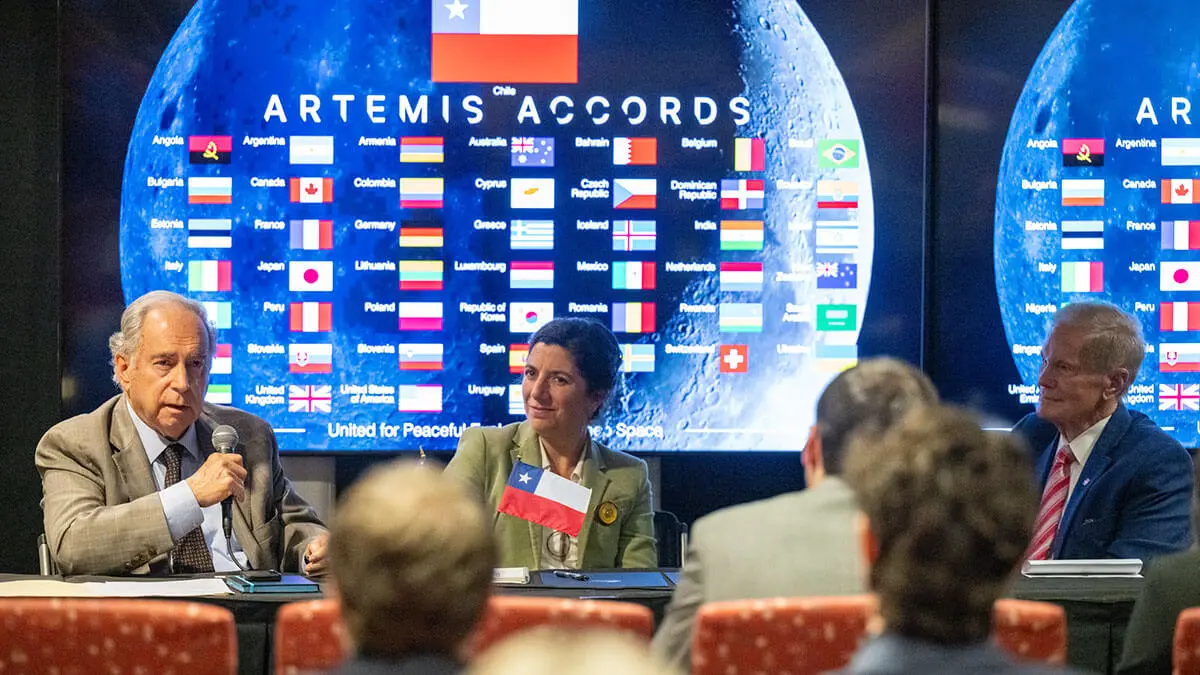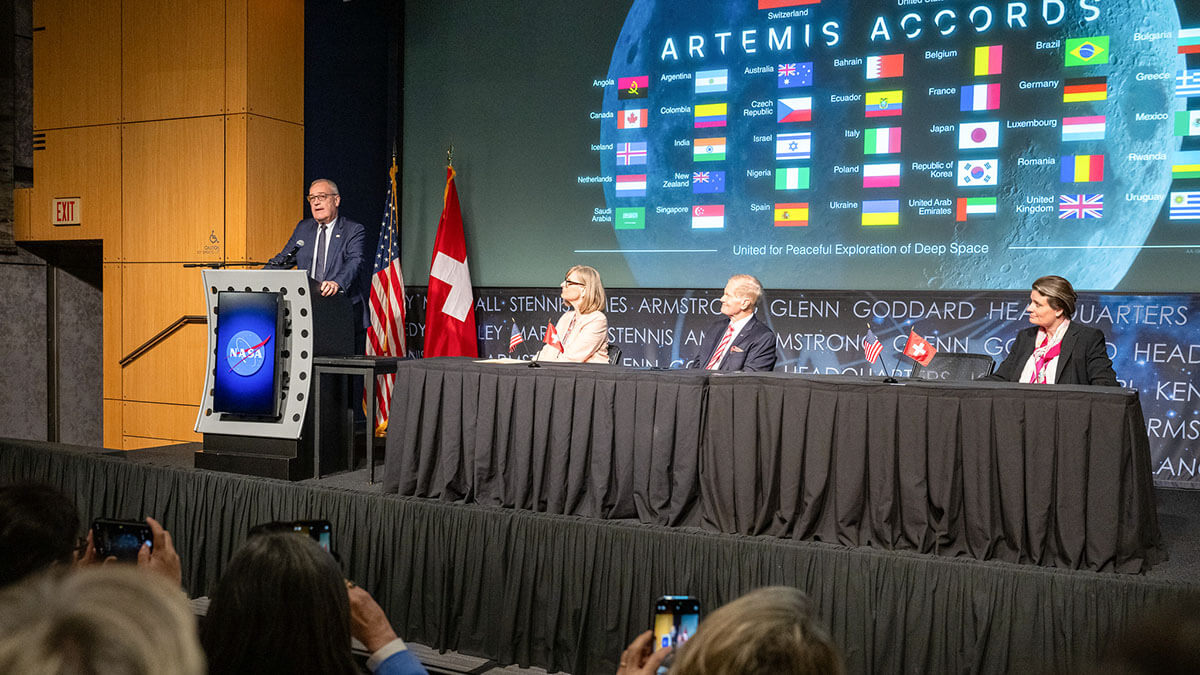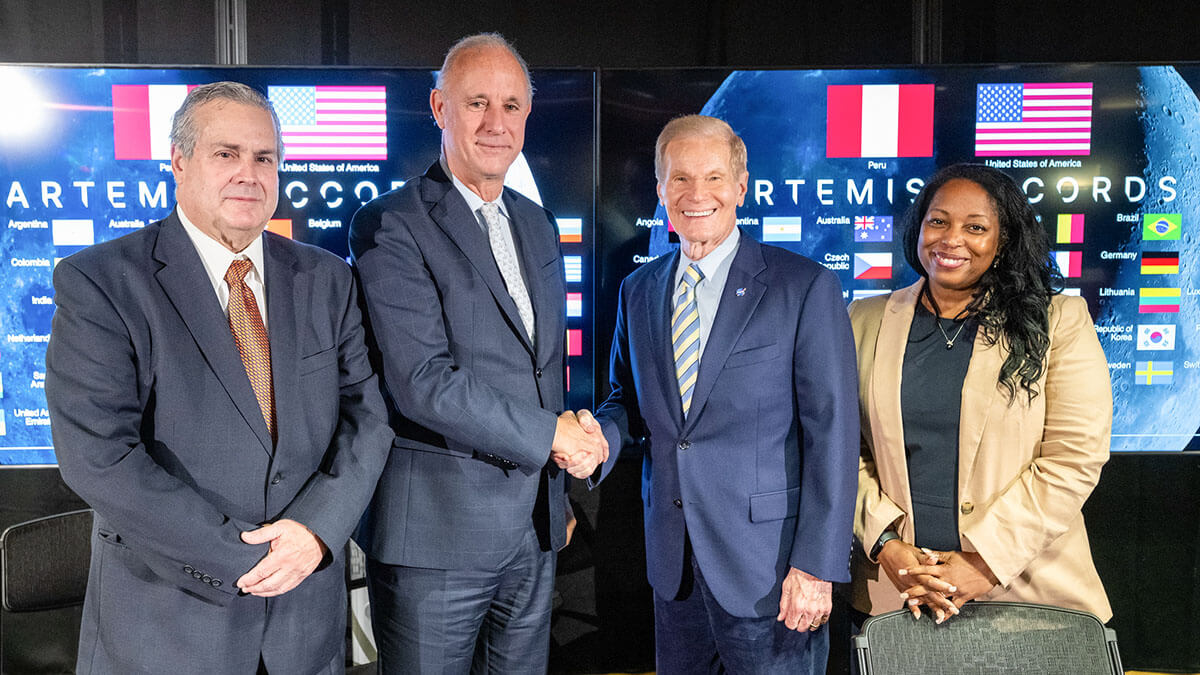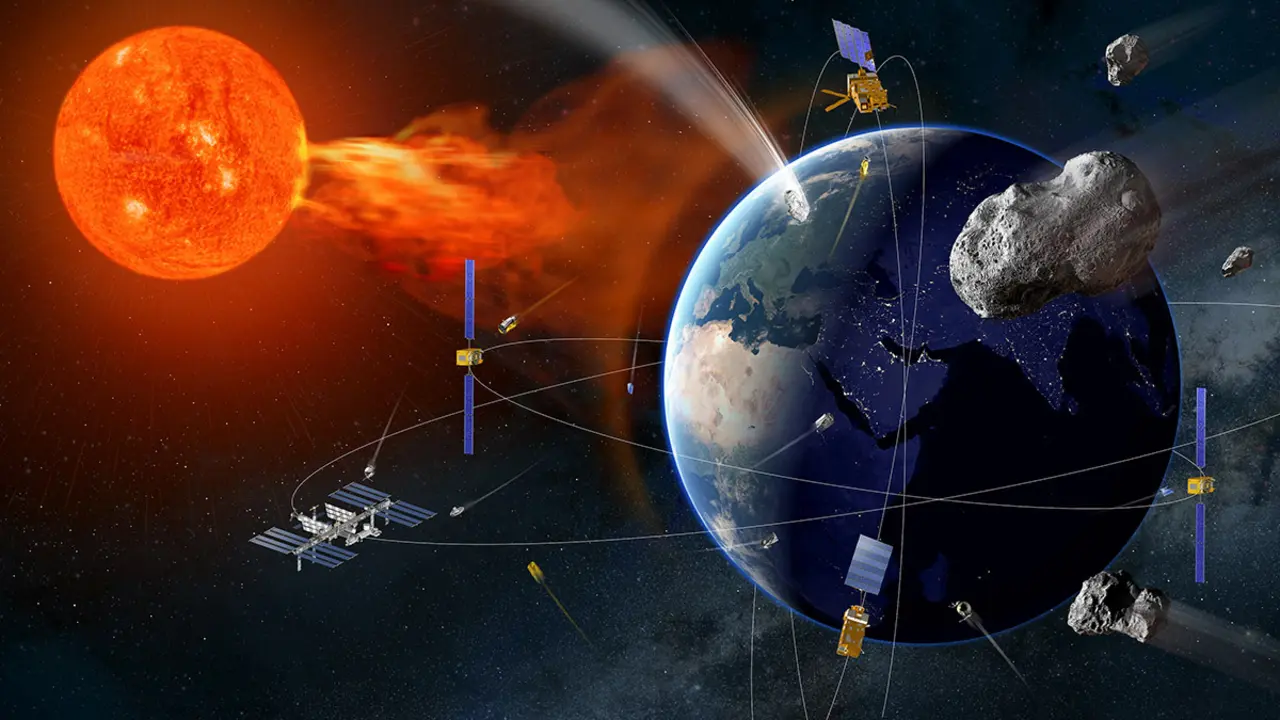46 nations are in the US orbit and 11 in the China-Russia orbit to explore the Moon

For more than three years, the United States and the China-Russia binomial have been engaged in a unique diplomatic duel to attract as many nations as possible from all over the world to their respective orbits of influence.
The competition in the international arena is being played out in Washington, which has just succeeded in making the Chilean government, headed by Gabriel Boric, the 46th signatory to the so-called Artemis Agreements. This is a set of rules of behaviour linked to NASA's future Artemis lunar missions, whereby adhering states assume that they will carry out safe and sustainable activities in the framework of cooperation and the peaceful use of outer space exploration.

The Beijing-Moscow tandem's approach is different and is further behind in gaining support for the cause of building a scientific base on the lunar surface, which would first be robotic and later inhabited to explore the Earth's natural satellite in depth. With the approval of Presidents Xi Jinping and Vladimir Putin, the project is called the International Lunar Research Station -ILRS- and so far only 11 nations have joined, in addition to its two sponsors, who aspire to bring together fifty or so partners.
The latest country to join the Sino-Russian proposal is Senegal. The director of the newly created Senegalese Agency for Space Studies (ASES), astronomer Maram Kaire, signed up to ILRS in early September. This was on the occasion of the visit to China of an official Senegalese delegation led by the President of the Republic, Bassirou Diomaye Faye, to attend the China-Africa Cooperation Forum.
The uniqueness of the ILRS project
Since the announcement of the ILRS initiative in June 2021, the bilateral strategic project has involved the countries closest to Moscow and Beijing's spheres of influence. On Russia's side, Azerbaijan, Belarus, Kazakhstan and Serbia have committed themselves, as well as two South American nations with regimes close to the Kremlin: Nicaragua and Venezuela. China's influence has been felt in Egypt, South Africa, Pakistan and Thailand, which have also joined.
The ILRS project is led by the head of the Chinese space agency (CNSA), Zhang Kejian, with the direct involvement of the equivalent Russian organisation (Roscosmos) and its director general, Yuri Borisov. Like the US proposal, ILRS has the full support of the Chinese and Russian foreign ministries, headed by veteran diplomats Wang Yi and Sergei Lavrov respectively.

In a departure from the Artemis Agreements, ILRS is not only open to nations. Scientific organisations, official national and international institutions and companies are also eligible. These include the Belt and Road Alliance for Science and Technology, the Space Science Innovation Centre (Panama), the African Space Development Foundation, Orbital Space (UAE), the Belgrade Astronomical Observatory (Serbia), the South African Radio Astronomy Observatory, Spacetalk SA (Switzerland), Bandar Lampung University (Indonesia) and the National University of Science and Technology (Pakistan).

China and its Russian partner aim to set up a first robotic base on the moon by the middle of the next decade. It would be equipped with power-generating modules, scientific equipment, communications systems with Earth and lunar rovers. The next step, by the mid-2040s, would be to expand and refurbish the base to accommodate cosmonauts from both nations and partner countries engaged in research and experimentation. With Russia engaged in its war against Ukraine, China is carrying the weight of ILRS and its precursor missions will launch in 2026 (Chang'e-7) and 2028 (Chang'e-8).
Trump Administration takes over from the Accords
The Biden Administration hopes to close the year 2024 and hand over to the new leadership of the State Department and NASA with half a hundred nations signed up to the Artemis Agreements. The prospects are possible, because that is what the vast majority of the top executives of the space agencies of the Artemis signatory countries have envisioned.
A total of 42 of them met at the 2024 edition of the International Astronautical Congress held in Milan (Italy) from 14 to 18 October, which was attended by the Executive Director of the Spanish Space Agency (ESA), Juan Carlos Cortés.

There are many Ibero-American partner countries. From the Caribbean there is the Dominican Republic and from the South American continent itself, Argentina, Brazil, Chile, Colombia, Ecuador, Mexico, Peru and Uruguay. Bolivia, Paraguay, Suriname and Guyana, the latter two on the northern Atlantic coast of the Americas, have not yet joined.
The Artemis Agreements are open for signature indefinitely. To date, 46 states have already joined Washington's initiative. In addition to the ten South American nations, there are eight Asian, three African, two Oceanian and 23 European nations.

Of the many European states that have joined, the majority are NATO and/or European Union member nations such as Belgium, Cyprus, France, Germany, Greece, Iceland, Italy, Luxembourg, the Netherlands, Spain, Sweden, the United Kingdom and the United Kingdom. There is also neutral Switzerland and a group of former Soviet republics - Armenia, Estonia, Lithuania, Ukraine - and countries or splinters of the defunct Warsaw Pact, such as Bulgaria, Slovenia, Slovakia, the Czech Republic, Poland and Romania.












